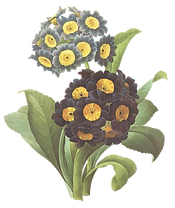On Compost
- laurengoff
- Jun 8, 2016
- 3 min read
One of the most important parts of farming is composting, because without good compost, even plants in the most naturally fertile soil would not have enough nutrients to produce as many edible products as we would like.
Sunday, June 5th, and Wednesday, June 8th, I was working on turning over the compost pile we are developing. You see, a compost pile is essentially a digestive system -- inside the pile, there are many, many microorganisms (80-90% of which bacteria) breaking down the food waste and releasing nutrient that plants can use. This is called "humus."
Other byproducts of the digestive process are carbon dioxide, water, and heat. The inside of the pile is the part that's getting very hot and producing heat and humus, and the outside is the part that is getting exposed to the air that the bacteria need to continue the process.
Turing the pile ensures that the air from the outside and the nutrients and moisture from the inside are evenly distributed, and the the temperature on the inside does not exceed 200 degrees Fahrenheit (93 C), which damages the organisms in the compost.
To turn over a compost pile, you open up a hole or divet that goes to the bottom of the pile.

Put in any new compost in the hole.

If the new compost is large, hard, and/or bulky, it is a good idea to break it up with a machete or other such instrument here. This is comparable to the churning of a stomach breaking up food for easier digestion.

Then, shovel the dusty compost from the top of the pile into to hole.

Last, take the dark compost from the bottom of the pile that you should have displaced to make the hole in the first step, and put it on the top of the pile.

Ideally, the pile would be shaped like half of a cylinder (i.e. the ends would be semicircles) because circles,and by extension cylinders, are the shape that allows the greatest interior area withe the smallest exterior area. This would allow greater humus-making area in the compost pile. However, the dirt, waste, and manure naturally tends to make a rough triangular prism.

Perfect (Source)

Not Perfect (Source)
Composting has three phases:
1. The mesophilic, or moderate-temperature phase, which lasts for a couple of days -- this is when bacteria that prefer moderate heat begin to break down the compost into structures that other bacteria can digest.
2. The thermophilic, or high-temperature phase, which can last from a few days to several months -- after the mesophilic bacteria cause the heat in the compost to rise beyond 104 degrees Fahrenheit (40 C), the thermophilic bacteria digest proteins, fats, and complex carbohydrates like cellulose and hemicellulose. These are the major structural molecules in plants. This is also the stage that kills off most pathogens.
3. The several-month cooling and maturation phase, which is the stage in which the temperature of the compost cools back down and mesophilic bacteria take over again to digest the most resistant compounds, which have withstood the rigors of the previous microorganisms. Waste with particularly hard cell walls, like corn cobs, or with complex sugars, like sweets or meat, typically make it to this phase.

A Chart of the Temperatures Some Bacteria Thrive In (Source)
I had not thought much, if anything,of compost before. Now that I know of its significance, however, even inconspicuous piles of manure and food waste have become interesting to me.











Comments